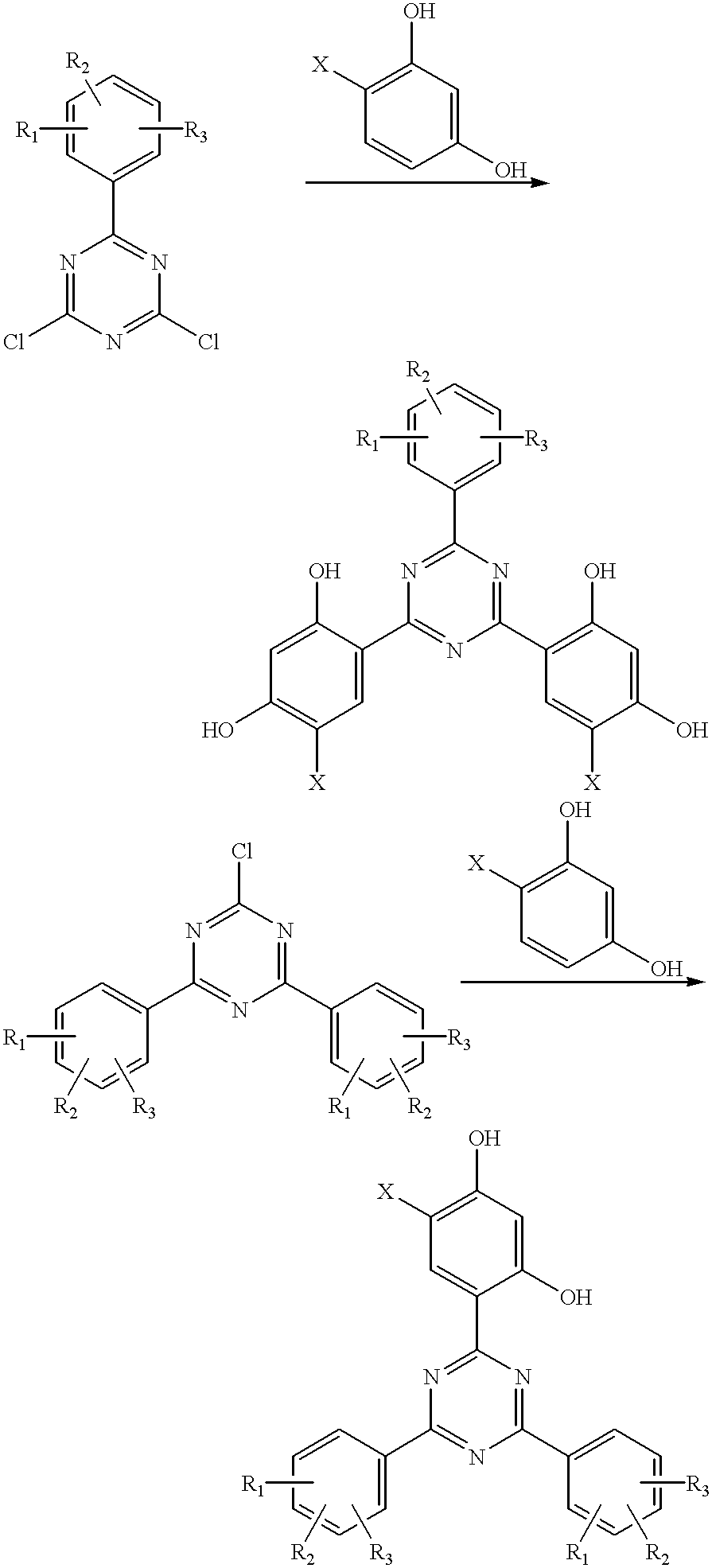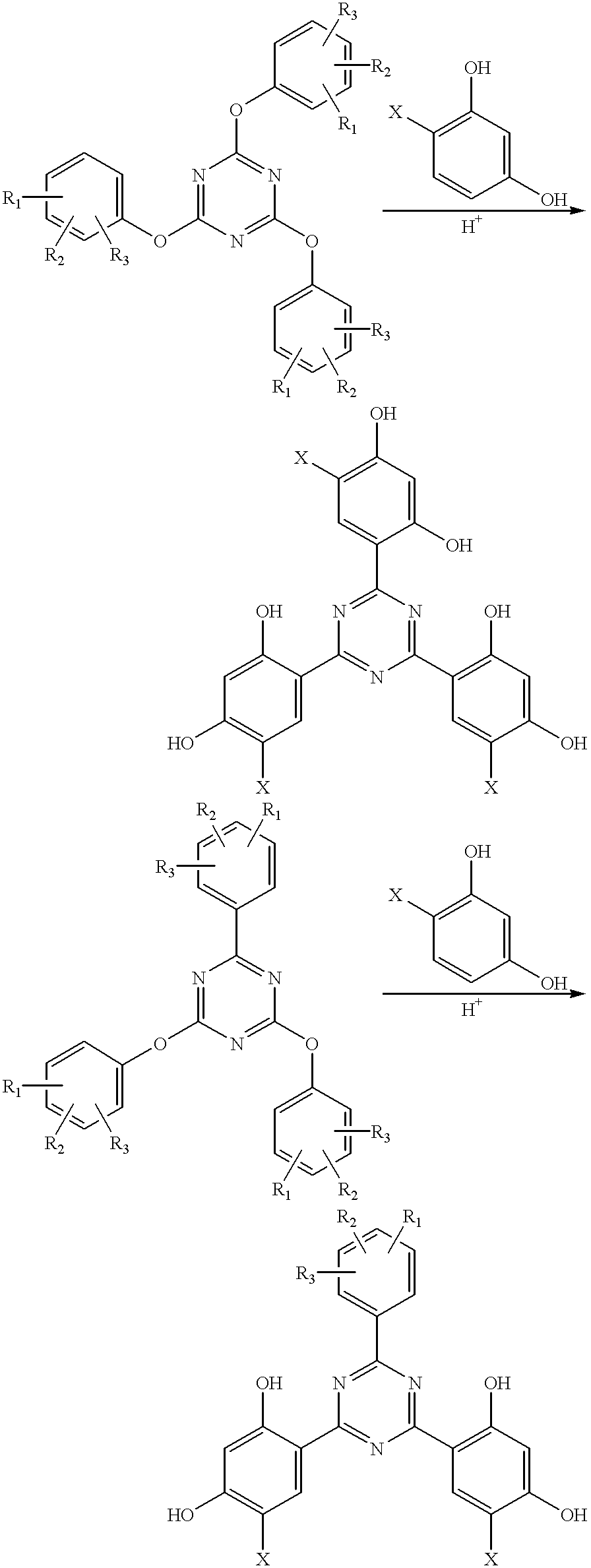Methods for the preparation of tris-aryl-o-hydroxyphenyl-s-triazines
a technology of aryl o-hydroxyphenyl s-triazines and tris-aryl o-hydroxyphenyl s-triazines, which is applied in the field of tris-aryl o-hydroxyphenyl s-triazines, can solve the problems of large amounts of lewis acid needed to mediate the reaction, non-selective fryel-crafts reactions of aryl groups and cyanuric chlor
- Summary
- Abstract
- Description
- Claims
- Application Information
AI Technical Summary
Benefits of technology
Problems solved by technology
Method used
Image
Examples
example 2
4,6-Bis-(2,4-dimethylphenyl)-2-phenoxy-s-triazine
To a 1 L four-necked, round-bottomed flask equipped with a mechanical stirrer and an addition funnel is charges 37.5 g (0.203 mol) of cyanuric chloride and 200 mL of m-xylene. The suspension / solution is chilled below 5.degree. C. and 34.5 g of sodium bicarbonate, 200 mL of water and 1.4 g of benzyltrimethylammonium chloride are added. The contents of the flask are again cooled below 5.degree. C. A solution of phenol (19.2 g, 0.203 mol) in 100 mL of m-xylene is charged to the addition funnel and then added over a 10-minute period to the reaction flask while the temperature is maintained between 1.degree. C. and 3.degree. C. The mixture is then stirred at 2-7.degree. C. for five hours.
The mixture is then warmed to 50.degree. C. and the phases are separated. The organic phases is returned to the reaction flask and 32.5 g (0.244 mol) of aluminum chloride are added at 35.degree. C. The mixture is then heated at about 130.degree. C. for thr...
examples 3-8 , 10 and 13
Examples 3-8, 10 and 13 below represent some of the various novel methods which can be used to prepare 4,6-bis-(2,4-dimethylphenyl)-2-(2,4-dihydroxyphenyl)-s-triazine.
example 3
4,6-Bis-(2,4-dimethylphenyl)-2-(2,4-dihydroxyphenyl)-s-triazine
To a 50 mL round-bottomed flask equipped with a magnetic stirrer, condenser and nitrogen atmosphere are charged 1.00 g (3.10 mmol) of 4,6-bis-(2,4-dimethylphenyl)-2-chloro-s-triazine and 1.70 g (15.5 mmol) of resorcinol. The mixture is stirred at 180.degree. C. for five hours at which point .sup.1 H nmr (CDCI.sub.3) of an aliquot reveals a 72% overall conversion to the title compound.
PUM
| Property | Measurement | Unit |
|---|---|---|
| temperature | aaaaa | aaaaa |
| temperature | aaaaa | aaaaa |
| temperature | aaaaa | aaaaa |
Abstract
Description
Claims
Application Information
 Login to View More
Login to View More - R&D
- Intellectual Property
- Life Sciences
- Materials
- Tech Scout
- Unparalleled Data Quality
- Higher Quality Content
- 60% Fewer Hallucinations
Browse by: Latest US Patents, China's latest patents, Technical Efficacy Thesaurus, Application Domain, Technology Topic, Popular Technical Reports.
© 2025 PatSnap. All rights reserved.Legal|Privacy policy|Modern Slavery Act Transparency Statement|Sitemap|About US| Contact US: help@patsnap.com



